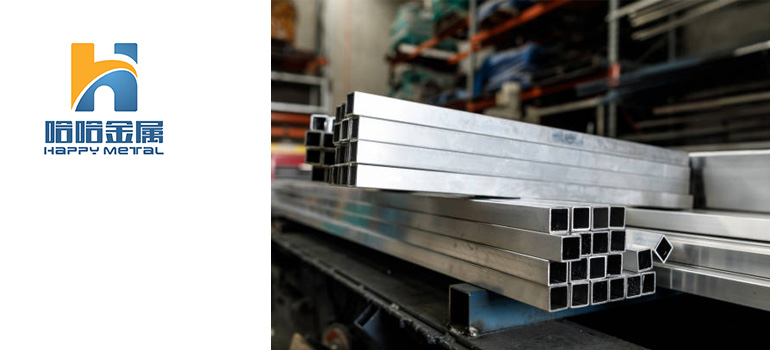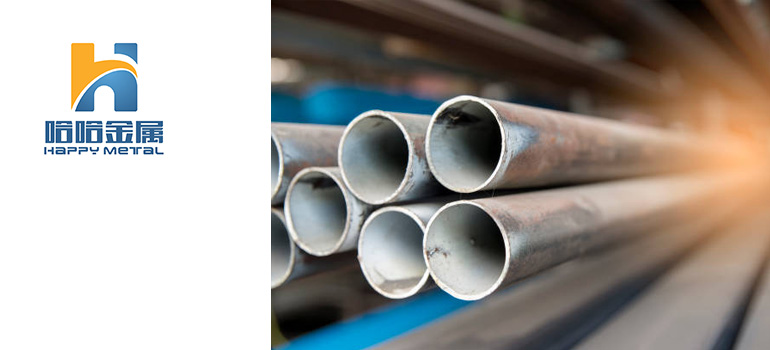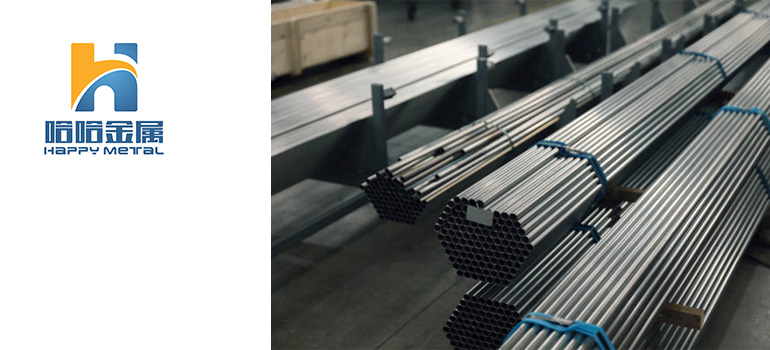Summary:
There are two types of stainless steel pipes: welded stainless steel pipes and seamless stainless steel pipes.
2 Types Of Stainless Steel
What Is A Welded Stainless Steel Pipe?
What Is A Seamless Stainless Steel Pipe?
Differences Between Seamless And Welded Stainless Steel Pipes
There are two types of stainless steel pipes: welded stainless steel pipes and seamless stainless steel pipes. Many people are unaware of the differences. What are the differences? The rest of this article will go over the differences between the two types of stainless steel pipe in detail.
What Is A Welded Stainless Steel Pipe?

A welded stainless steel tube is the type made by rolling stainless steel strips or sheets into a tube shape and longitudinally welding the seam. Welded tubing can be produced using either hot or cold forming processes. Cold forming creates sleeker finishes and firmer tolerances than hot forming. However, each method creates a long-lasting, strong steel tube that is corrosion-resistant.
There are two options for the seam: you can leave it beaded, or you can continue to forge and cold roll the seam. For a smoother welded seam with superior surface finishes and firmer tolerances, the tube that has been welded can also be developed similarly to seamless tubing.
A seam is produced on the body of a welded steel pipe during the manufacturing process, which starts with a flat steel plate or steel strip. When making a welded steel pipe, a steel plate or strip is bent and then welded into either a circular, square or traditional pipe shape.
It is possible to classify it as either a straight seam welded pipe or a spiral welded pipe, depending on the shape of the weld.
Pipes that are welded longitudinally have a straightforward manufacturing process, high production efficiency, relatively low costs, and a rapid rate of technological advancement.
Pipes that are welded spirally have a strength that is typically greater than that of pipes that are welded straight seam to seam. A narrower blank can be used to make welded pipes with larger pipe diameters, while a billet with the same width can make welded pipes with different pipe diameters. Weld length is increased by 30–100% in comparison to a straight seam pipe of the same length, and production speed is decreased as a result.
As a result, the majority of welded pipes with smaller diameters use a straight seam welding technique, while the majority of welded pipes with larger diameters use a spiral welding technique.
What Is A Seamless Stainless Steel Pipe?

A heated “billet” of solid round steel is used to create a seamless stainless steel pipe. The billet is then moved over a form in either a pushing or pulling motion. Seamless pipes are manufactured in various sizes and schedules.
Nonetheless, large-diameter pipe production is limited. In the production of pipe fittings like bends, elbows, and tees, seamless pipes are frequently used. The welding line is typically the weakest element of the pipe, but a seamless pipe lacks a seam, allowing the pipe’s entire diameter to withstand high pressure equally.
The ideal seamless steel pipe has no welding joints and is made of a solid metal tube that is connected to another tube at each end. These pipes have threads on each end or can be threaded on both ends of a hollow tube or pipe. Lacking a welding line, however, allows the seamless pipe to support both its own weight and that of a heavily loaded vehicle while maintaining its original structure.
Due to its exceptional strength and anti-bending property, seamless pipe is widely used in a variety of commercial applications, including shipbuilding, offshore drilling platforms, pressure vessels, manufacturing, the chemical industry, and more.
There are three distinct kinds of supplies, each suited to a particular function:
a. Supply in accordance with the mechanical properties and chemical composition;
b. According to the performance of the mechanical system;
c. In accordance with the supply’s water pressure test.
If they are going to be used to withstand liquid pressure, steel pipes supplied according to categories a and b are also required to go through a hydraulic test.
After reading through the definition of the types of stainless steel, tag along as we move to the next important section, differences.
Differences Between Seamless And Welded Stainless Steel Pipes
Let’s look into the major differences between the two types of stainless steel. One has no gaps, while the other does, as can be seen from their definitions. Additionally, a gap can be seen in the body of a welded steel pipe but not in a seamless steel pipe, which is visible from the outside. Seamless steel pipes are generally more expensive than welded steel pipes. Manufacturing facilities typically use seamless steel pipes, whereas construction sites typically use welded steel pipes. Seamless steel pipes have greater pressure resistance than welded steel pipes. That’s not all major differences also exist in the form of:
- Appearance
Seamless pipe is made from steel billets. Hot rolling cannot remove the flaws on a billet’s outer surface.Polishing must be done after the product is complete. The defect can only be partially eliminated during the wall reduction process.
Welded steel pipe is made from hot rolled coil as the raw material. The surface quality of the coil is the same as the surface quality of the pipe, and it is simple to control. The surface of hot-rolled coils is of excellent quality.
As a result, the surface quality of welded steel pipe is far superior to that of seamless steel pipe.
- Size availability
The majority of Chinese manufacturers of seamless steel pipes produce these pipes with a maximum outside diameter of 20 inches (508 mm). Because of the limitations of the equipment, which is typically smaller than 16 inches (406.4 mm), Additionally, hot expanding machining must be used if the client wishes to purchase seamless steel pipe in sizes greater than those mentioned above.
However, the quality of this hot expanded type of seamless steel pipe typically cannot be compared to that of the original seamless steel pipe.
Contrarily, welded steel pipe doesn’t have these restrictions and comes in sizes ranging from 1-1/2 inches (48.3 mm) to 100 inches (2540 mm).
- Performance and usage
Compared to ERW welded steel pipe, seamless steel pipe has higher strength and better pressure capacity. As a result, it is widely used in the high-pressure equipment and thermal boiler industries.
The weakest point of welded steel pipes is typically the weld, and the quality of the weld has an impact on overall performance.
In general, seamless steel pipes are 20% more pressure-resistant than welded steel pipes. People prefer seamless steel pipes because of their dependability.
In fact, all industrial pipelines are made of seamless pipes because they are subjected to extreme thermal, chemical, and mechanical loads. Welded pipes are more commonly used in the aerospace, automobile, and electronics industries, where the budget and work pressure on the pipes are both relatively low.
- Cost and pricing
Because of the raw materials, manufacturing equipment, and processes, the cost of seamless steel pipes is typically higher than that of welded steel pipes. Nevertheless, welded pipes can occasionally be more expensive due to market pressure. If this is the case, don’t hesitate to buy a seamless steel pipe with the same dimensions.
- Molding process
The rolling process only needs to be done once in order to produce a seamless steel pipe.
Bending and a variety of welding processes are used in the production of welded steel pipe, which begins with a steel strip or plate as the raw material.
- Played roles
Pipes made from seamless steel have many applications, including those in the oil and gas industry, the petrochemical industry, the power generation industry, the transportation industry, and the aerospace industry.
Welded steel pipes are primarily used for electric welded steel pipes for oil drilling and machinery production, etc. Furnace welded pipes for water gas transportation. Large-diameter longitudinally welded pipes for high-pressure oil and gas transportation. Spiral welded pipes for oil transportation, pipe piles, bridge piers, etc.
- Characteristics
The maximum diameter of a seamless steel pipe is 650 millimeters, and the minimum diameter is 0.3 millimeters. There are thin-walled pipes and thick-walled pipes, and each one is better suited for a specific application.
When exposed to acidic conditions, T-welded steel pipes that contain nickel have a high level of corrosion resistance. When used in environments that contain sulfuric or hydrochloric acid, T-welded steel pipes with a higher Ni content have a greater resistance to corrosion than those with a lower Ni content. Under typical conditions, the only thing that can stop corrosion in a T-welded steel pipe is adding Cr to it.
- Nature
The surface of a seamless steel pipe does not contain any seams because it is fabricated from only one piece of metal.
Welded steel pipes are formed by bending and deforming steel strips or steel plates into round or square shapes before being welded into steel pipes with surface seams.
- Grain size
The temperature and duration of the heat treatment process are related to the metal’s grain size. Both an annealed tube made of stainless steel with seams and a seamless tube made of stainless steel have the same grain size. The grain size of the weld will be smaller than the grain size of the welded metal if the seam pipe uses the minimum cold treatment. If the minimum cold treatment is not used, the grain size of the weld will be the same.
Having gained the much needed knowledge on the types of stainless steel, their characteristics, and their major differences, there is no doubt that you can make the best decision as to which you need and why! One of the most useful metal alloys for manufacturing and fabrication is stainless steel tubing. When deciding between the two, keep in mind that the tubing must first meet your project specifications, and then it must meet the conditions under which the tubing will be used.




